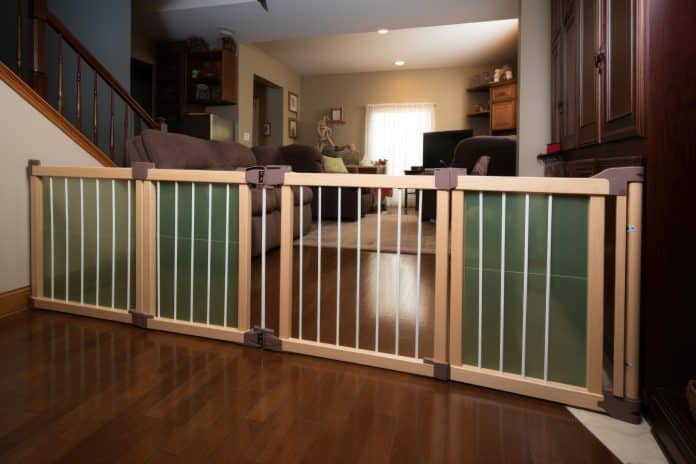Dementia can make previously familiar spaces confusing and unsafe for those living with the condition. Home doesn’t feel as safe and comfortable as it once did. Simple tasks become confusing and frustrating. Fear and uncertainty take hold. Daily life is a struggle.
But families can make changes to help. Minor adjustments to the home and routine can create a peaceful place that brings back feelings of comfort. With care and creativity, they can build homes that allow those affected to successfully navigate daily life with dignity.
Let’s explore some practical tips for adapting both the physical space and daily routine to support a person with dementia.
Understanding Dementia
Dementia isn’t a normal part of aging. It’s caused by damage to brain cells that affects a person’s ability to remember, think, communicate, and perform daily activities.
While we often associate dementia with memory loss, it also impacts attention, visual perception, and language. The person’s personality and behavior may also change dramatically. Dementia is progressive, with symptoms worsening over time as more brain cell damage occurs.
Home safety risks are high. Being proactive helps prevent dangerous situations and allows those with dementia to retain independence as long as possible while managing these complex challenges.
Ways Of Creating A Safe Home Environment
Adapting to a secure, dementia-friendly environment shows your love and profound care for your family member who has dementia. Do you feel overwhelmed and don’t know where to start?
Consider consulting with some dementia home care services providers. To give you a head start, however, you may follow these tips:
-
Simplify The Home Layout
Simplifying the home’s layout is an essential first step.
Removing extra furniture opens space and clears previously cluttered or confusing pathways. This minimizes tripping hazards and accidents.
It also helps to label each room with colored signs or photos, like sticking a picture of a bed on the bedroom door. These visual cues help to orient the person with dementia.
Ensure lighting is good in hallways and rooms to improve safety and reduce nighttime confusion. Installing night lights or increasing the wattage in existing bulbs makes a difference.
-
Identify And Secure Hazardous Areas
Identifying and securing potentially dangerous areas and objects can protect dementia patients and caregivers.
Use baby gates at the top and bottom of staircases, and install window guards and heavy-duty locks on exterior doors. These installations prevent risky wandering outdoors and potential falls.
Also, lock up hazardous items—like knives, scissors, cleaning products, or medications—in sturdy cabinets. Consider installing drawers and cupboards that require a key or combination to open. This reduces the chance of unsafe access or accidental poisoning.
-
Include Engaging Activities
Physical activities stimulate the mind as a person ages, potentially slowing down cognitive decline to some extent.
Engaging activities—such as puzzles, DIY crafts, and painting—are recommended as long as they are appropriate for the person’s interests and abilities. For example, if the person loves plants, setting up gardening tools or other gardening-related activities can improve their well-being.
If the patient loves outdoor activities, make sure that the outdoor spaces are also safe, like installing fences around the area.
You may also play favorite songs, radio stations, or TV shows to bring back memories. They may no longer remember what they were once able to do, but you can tap into their remaining skills through simple activities.
-
Optimize Bedrooms
The bedroom must be a calm and relaxing space among all the places at home.
Remove unnecessary furniture. It would help to use furniture or decor that is familiar to them, such as old chairs, lamps, and paintings. As much as possible, use transparent storage solutions or open-view furniture for ease of access.
It’s not advisable to leave dementia patients alone. In situations where it’s unavoidable, it is recommended to use monitoring devices—such as CCTV, motion sensors, or bed alarms—so you can still check the patient’s activities. This could also prevent unsafe wandering.
-
Incorporate Personalized Memory Aids
Using memory aids provides helpful cues that motivate them to do their daily tasks. Post extensive visual schedules, calendars, or picture-based to-do lists reminding of mealtimes, medicines, or activities. Set up medication reminders with alarms and pill organizers marked with ‘AM/PM.’ Use a whiteboard to write down significant notes like appointments.
Make sure to label drawers and cabinets clearly with words and photos indicating contents. This visual aid can be especially helpful for quick identification and organization, making it easier to find items without confusion.
-
Modify Kitchen and Bathroom
Don’t forget the kitchen and bathrooms, as these areas are frequently visited daily. Install grab bars near key spots to assist with mobility and balance issues. Non-slip mats help prevent falls on slick tile or wet surfaces. Lever-style door handles make entering and exiting easier.
In the kitchen, an induction stovetop with auto shut-off is a safer option if forgetting to turn off appliances is a concern. Adaptive devices like rocker knives, rimmed plates, and angle-tipped utensils help retain the ability to prepare and eat food more independently. Turntables and open shelving minimize the need to reach and bend.
Final Thoughts
Caring for someone with dementia presents challenges that can be eased by adapting to the home environment. Assess your living space for clutter, poor lighting, complicated layouts, glares, and unsecured hazards that could confuse or pose a danger.
Prioritize simplifying the space, establishing visual guides, securing dangers, and maintaining familiarity. Although they require diligence and help from others, minor home modifications can significantly empower a loved one with dementia.
With some effort to understand their perspective, you can transform your home into a calmer, safer place for supporting their health and quality of life.






















